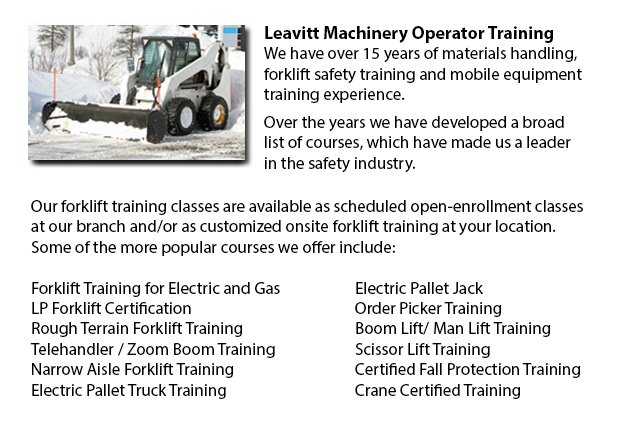
Skid Steer Ticket Edmonton - The lift arms on the skid-steer loader are situated next to the driver together with pivots at the back of the driver's shoulders. These features makes the skid-steer loader different as opposed to the traditional front loader. Due to the operator's closeness to moving booms, early skid loaders were not as safe as conventional front loaders, specially throughout the operator's entry and exit. Modern skid-steer loaders now have numerous features to protect the driver including fully-enclosed cabs. Like various front loaders, the skid-steer model can push materials from one location to another, is capable of loading material into a truck or trailer and could carry material in its bucket.
Operation
Usually a skid-steer loader is able to be utilized on a jobsite instead of a big excavator by digging a hole from within. To begin with, the skid-steer loader digs a ramp leading to the edge of the desired excavation, and then it makes use of the ramp in order to excavate material out of the hole. As the excavation deepens, the equipment reshapes the ramp making it longer and steeper. This is a particularly helpful technique for digging underneath a building where there is not sufficient overhead clearance for the boom of a big excavator. For example, this is a common scenario when digging a basement below an existing house or building.
The skid-steer loader attachments add much flexibility to the machine. Like for instance, traditional buckets on the loaders can be replaced accessories powered by their hydraulics comprising pallet forks, backhoes, tree spades, sweepers, mowers, snow blades and cement mixers. Various other popular specialized buckets and attachments consist of tillers, stump grinders rippers, wheel saws, snow blades, trenchers, angle booms, dumping hoppers, wood chipper machines and grapples.
History
The front end 3-wheeled loader was invented in 1957, by Louis and Cyril Keller in their hometown of Rothsay, Minnesota. The Keller brothers made this machinery in order to help mechanize the method of cleaning in turkey barns. This machine was compact and light and had a back caster wheel which enabled it to maneuver and turn around within its own length, enabling it to carry out similar work as a conventional front-end loader.
The Melroe brothers of Melroe Manufacturing Company in Gwinner, N.D. purchased during the year 1958, the rights to the Keller loader. The business then hired the Keller brothers to assist with development of the loader. The M-200 Melroe was the result of this partnership. This model was a self-propelled loader which was launched to the market in the year 1958. The M-200 Melroe featured a two independent front drive wheels, a rear caster wheel, a 12.9 HP engine and a 750 lb lift capacity. By nineteen sixty, they changed the caster wheel with a rear axle and launched the first 4 wheel skid steer loader that was called the M-400.
The M-400 shortly became the Melroe Bobcat. usually the term "Bobcat" is utilized as a generic term for skid-steer loaders. The M-440 was powered by a 15.5 HP engine and had 1100 lb rated operating capacity. The company continued the skid-steer development into the mid 1960s and launched the M600 loader.
-
Forklift Training Programs Edmonton
Forklift Training Programs Edmonton - If you are searching for work as an operator of a forklift, our regulatory-compliant lift truck training programs provide excellent instruction in numerous styles and types of forklifts, classes on pre-shift insp... More -
Heavy Equipment Training School Edmonton
Heavy Equipment Training School Edmonton - The heavy equipment operator courses will assist the operator in acquiring the required skills and knowledge they will require to be able to enter the workforce as an entry level operator. In this 12 week co... More -
Manlift Ticket Edmonton
Manlift Ticket Edmonton - The Elevated Platforms and Manlifts Certification program helps to provide the necessary training on the safe operating procedures, work practice, rules and regulations regarding the daily activities for the operators of thi... More -
Crane License Edmonton
Crane License Edmonton - Crane operators must be "credentialed", which means they must have a crane operator license or certification. Credentialing is considered a mandatory governmental requirement in order to practice as a crane operator. Having a... More -
Counterbalance Forklift License Edmonton
Counterbalance Forklift License Edmonton - When operated by totally trained operators, forklifts could become a major advantage for firms and companies. We could offer your staff a comprehensive training program which covers all aspects of operating... More -
Manlift Safety Training Edmonton
Manlift Safety Training Edmonton - Manlift operators have to be aware and cognizant of all the potential hazards which are associated with particular types of scissor lifts. They need to be able to operate the scissor lift in a way that protects not... More -
Forklift Training School Edmonton
Forklift Training School Edmonton - Forklift Training School And Reasons Why It Is Really Important - Industry and federal regulators have established the criteria for forklift safety training based on their existing standards and regulations. Indivi... More -
Overhead Crane Safety Training Edmonton
Overhead Crane Safety Training Edmonton - The overhead crane safety training course is designed to equip the operators with the right skills and knowledge in the areas of: crane safety precautions, materials handling, accident avoidance, and equipmen... More

Forklift Training Edmonton
crossorigin="anonymous">
TOLL FREE: 1-888-254-6157
Edmonton, Alberta
forklifttrainingedmonton.com
Email Us
About Us


